Discover a privileged enclave in Xàtiva, enjoy the archaeological heritage of Montsant and the places of interest in the surrounding area.
A series of buildings and ambiences of great interest are yours to enjoy by just wandering around the old town. Places of interest include La Seu, the town’s main church, which was built between the 16th and 20th centuries. It has always aspired, despite being a collegiate church, to recover its cathedral status from the Visigoth era, as evidenced by its size. The museum of Christian art housed in the church is well worth a visit, along with the climb up its impressive bell tower. A massive altarpiece made of Valencian ceramic tiles from the 18th century can be found near the base of the bell tower.
The square outside the church also contains the façade of the town’s old hospital, in the Renaissance style, and the door to the Gothic chapel. Walk a little further down the street to reach the Market Square, which is a good place to dine by day or enjoy an evening drink. Xàtiva’s Museum of Fine Art (Museo de Bellas Artes) is housed in a former school, the Casa de l’Ensenyança, and its Archaeological Museum occupies what was once a grain store, the Almodí. Both buildings, which house various interesting exhibits, are just a short walk away from each other.
A visit to some of the town’s other churches is also highly recommended. The church of Sant Francesc, or St Francis, a Gothic building dating back to the 14th century, contains an altarpiece painted by Valentí Montoliu, portraying the Nursing Madonna. The church of Sant Pere (St Peter) houses various painted mediaeval murals, historic crypts and three pictorial altarpieces. The main altarpiece consists of panels painted in the European Gothic style, along with others dating from the initial period of a 16th-century painter known as the Master of Alzira. There is also an altarpiece by the Master of Xàtiva (15th century), and another by the Master of Borbotó (16th century).
Various preserved fountains can still be found in the town’s streets, including a famous one with 25 water jets and the old Gothic fountain on Plaza de la Trinitat. Two public gardens mark each end of the town. One is named del Beso (literally “of the kiss”) and the other del Palasiet (“of the little palace”).
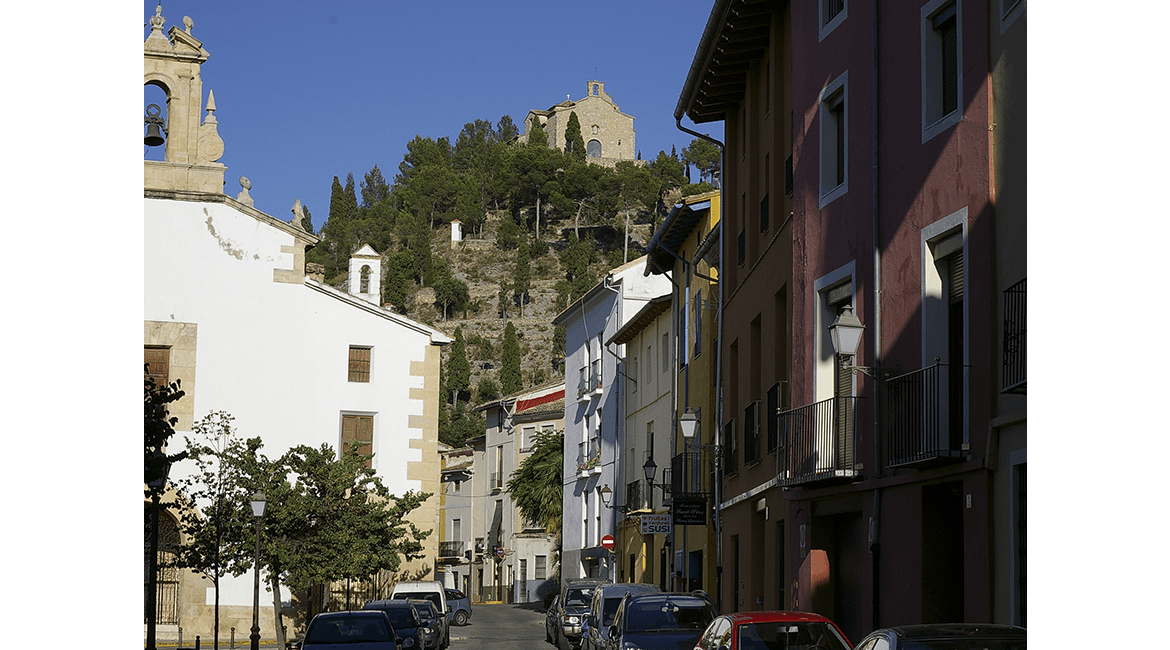
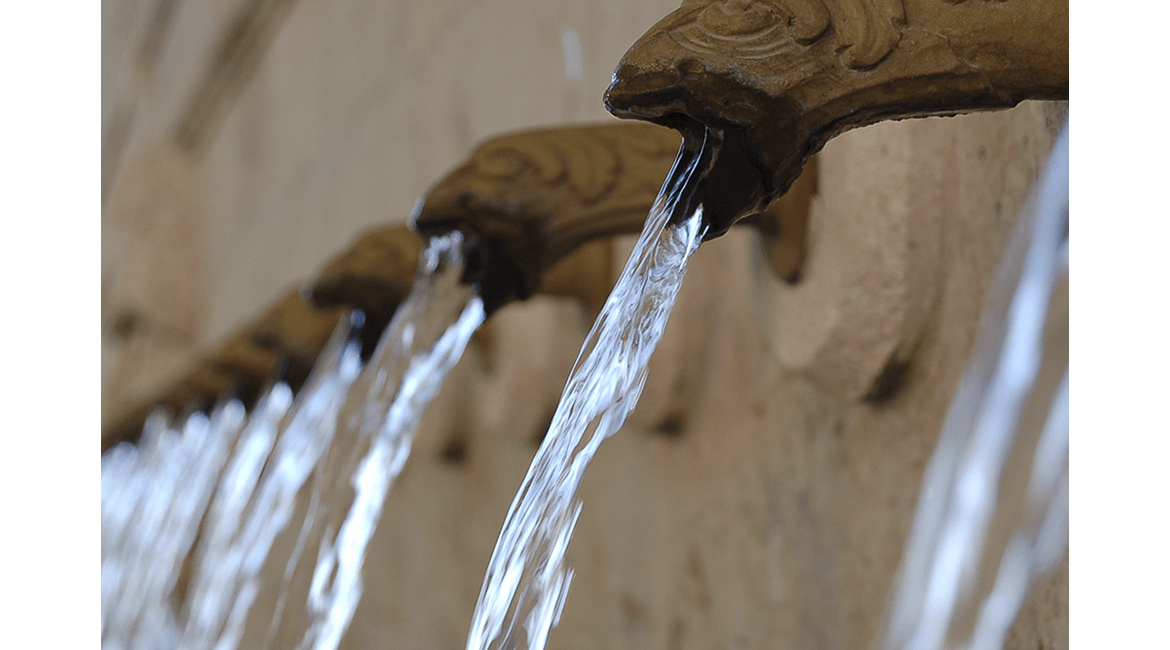
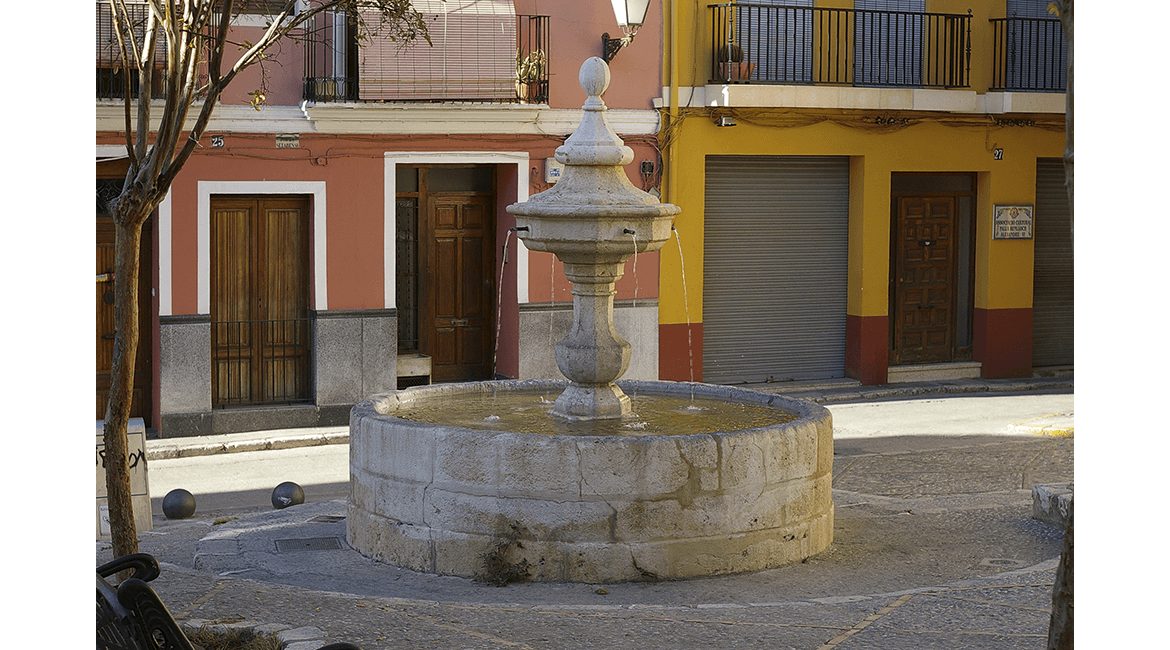
Interesting places
- Chapel of St. Joseph
- Chapel of St. Felix
- The Ice House and Caves
- The Castle
Chapel of St. Joseph
The chapel of St. Joseph, a neoclassical building dating from the 18th/19th century, is constructed over the remains of a mediaeval hermitage dedicated to St. Barbara. The base of the bell tower includes a rib vault from the original gothic temple. The chapel contains various marble and ceramic tombstones. Other outstanding features include an annex with an arched Renaissance ceiling and a staircase, richly decorated with ceramic fragments from the Rococo era, leading up from the sacristy to one of the galleries.
The entrance to the crypt dedicated to the stonemason’s guild, and bearing its coat of arms, is in front of the chancel. The chapel’s patrons also included carpenters, as demonstrated by the fine craftsmanship of the Rococo-style doors of the sacristy.A renaissance stone cross graces the outside of the building.
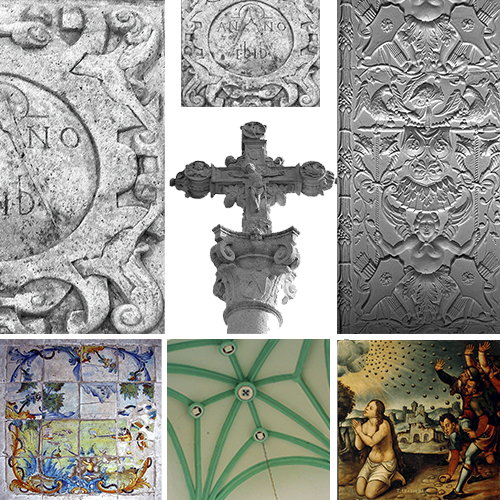
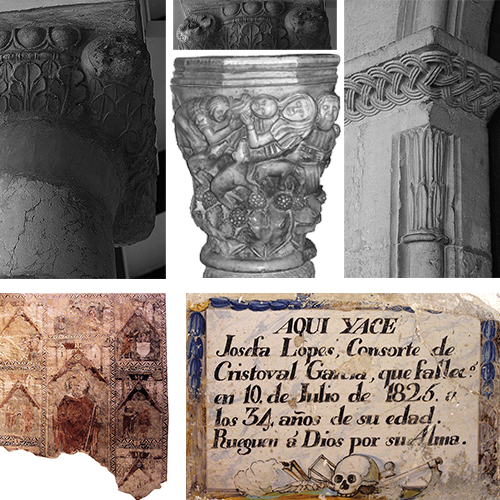
Chapel of St. Felix
The thirteenth-century chapel of St. Felix is the town’s oldest church building.The portico contains fragments of Roman columns from various original buildings. The door is Romanesque in style. The interior contains an alabaster font depicting the Nativity and the Adoration of the Shepherds. A series of impressive fourteenth-century murals decorates the walls, while the main altarpiece dates from the early fifteen-hundreds. This latter work is attributed to a painter known variously as the Master of Xàtiva, Artés or Borbotó, of whom other pieces survive elsewhere in the town. He also painted the INELCOM Epiphany. The painted wooden beams of the chancel ceiling conserve their original colours,and the stone blocks at each corner of the building still clearly bear the marks of the master stonemasons who created them..
The Ice House and Caves
The Ice House is a semi-underground building constructed during the 17th century to store snow collected from the hill leading up to the castle. It remained in use until the 19th century. A brick-built vault, which was originally covered with a conical roof, protected the interior from direct sunlight. The building can be accessed via a disused drainage tunnel.
The Cova dels Coloms (“cave of the doves”), which was converted into a sanctuary in the mid-20th century, and the Cova de les Gotetes (“cave of dripping water”) are both close by. The latter houses an underground reservoir, excavated out of the rock, which collects water as it slowly filters down through the hills
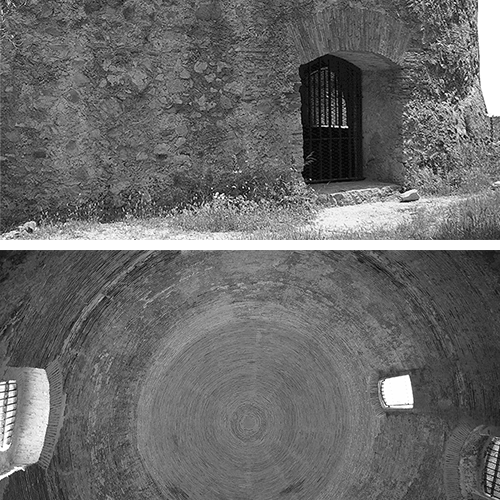
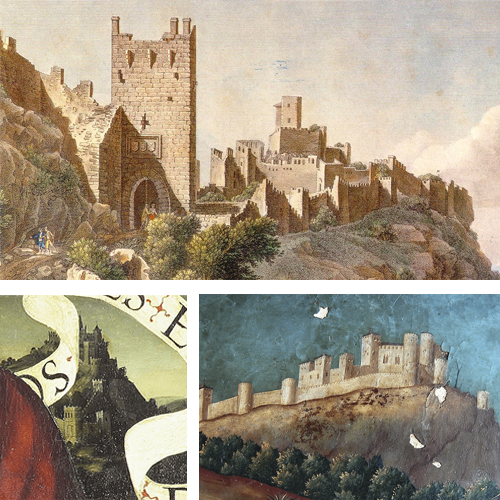
The Castle
The origins of Xàtiva Castle date back to the Bronze Age and the Iberian era. It acquired its current appearance in the Moorish period, and has since undergone many alterations and architectural modifications.. The War of the Spanish Succession, the earthquake of 1748 and the Napoleonic wars, coupled with the subsequent abandoning of the fortress, all led to its ruin. One outstanding feature that remains is the castle’s Socorro (“escape”) gate, which opens out onto the Valley of Bisquert and the neo-Gothic Chapel of Sant Jordi (St George). Three cannons from the original castle stand on the nearby stairway. Moving further uphill, we find the mediaeval water reservoir of Malanyat, the Chapel of Santa Maria (15th century) and the mediaeval dungeon that once housed the Count of Urgell.
